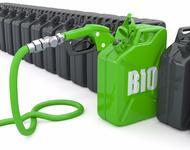On-site Generation
- By:
- Edward A. Reid Jr.
- Posted On:
- May 18, 2021 at 3:00 AM
- Category
- Energy Policy, Climate Change
On-site power generation was common in the mid-20th century for large power users with the need for high reliability power supply. These users included industrial plants running continuous processes, plants with large steam consumption, and institutions such as asylums, prisons and hospitals required to have on-site generation in the event of a grid outage. These on-site generation facilities were typically either coal or oil fueled, depending on geographic location and the existence of other coal or oil end uses at the site.
Many of these generating facilities were closed later in the century as grid capacity and reliability increased and the need for on-site generation became less critical and emissions regulations more damanding. On-site generation is now making a comeback, using natural gas simple cycle turbines with heat recovery systems or high efficiency natural gas combined-cycle turbines.
Hospitals and some other institutions are required to have on-site power with either high priority natural gas supply contracts or on-site propane or diesel fuel storage adequate to continue operations for some number of days.
These classes of electricity customers will face new and growing challenges as federal programs require the electric grid and its suppliers to shift to non-fossil sources of power generation, most of which (solar, wind) are intermittent and non-dispatchable. Grid reliability is expected to suffer, as has been demonstrated in California and Texas. The grid operators currently stabilize power supply with hydro, geothermal, natural gas, coal and nuclear generation. However, the fossil fuel generators would be unacceptable after 2035 under the current Administration climate plan, unless equipped with carbon capture and storage (CCS) capability or converted to biofuel operation.
Grid operators are investigating the potential of battery storage to stabilize the grid. However, the current cost of grid-scale battery storage is extremely high and the availability of the required batteries is extremely limited.
The challenges for facilities required to possess on-site generation capability, either for continuous or emergency use, are more complicated. Very few of these facilities are large enough to economically continue to use fossil generation with CCS. They could conceivably be granted waivers to continue to operate fossil-fueled generators until the net zero requirement proposed for 2050. Beyond that, their choices would be limited to biofuel generators, on-site battery storage or on-site packaged nuclear power plants.
Many small to medium sized commercial establishments and many single and multi-family residences are currently equipped with automatic standby generators, typically fueled by natural gas, propane or diesel. Biofuels would currently appear to be the only alternative for these smaller users after 2050.
Net zero would also require replacement of all fossil-fueled thermal end use equipment with electric end equipment for applications such as space and water heating, cooking and baking, laundry drying and steam generation. These new electric end uses would require larger on-site generation or electricity storage systems to meet critical needs during grid outages.
While on-site solar and wind generators are compatible with a wind and solar-powered grid, they would be unacceptable as on-site emergency generators, since they would be expected to be affected by the same weather conditions which affected the grid power generation facilities.
The brave new world of net zero would have its challenges.


